This article was co-authored by Lisa Bryant, ND. Dr. Lisa Bryant is Licensed Naturopathic Physician and natural medicine expert based in Portland, Oregon. She earned a Doctorate of Naturopathic Medicine from the National College of Natural Medicine in Portland, Oregon and completed her residency in Naturopathic Family Medicine there in 2014.
There are 7 references cited in this article, which can be found at the bottom of the page.
wikiHow marks an article as reader-approved once it receives enough positive feedback. In this case, several readers have written to tell us that this article was helpful to them, earning it our reader-approved status.
This article has been viewed 484,161 times.
Blackheads are little bumps that appear on the skin when your hair follicles get clogged with oil, makeup, or dirt. Though annoying, they’re a non-threatening skin condition and can be easily removed with some steam and towels.
Steps
Steaming Your Face
-
1Wash your face thoroughly. Steaming helps to relax and open the pores in your skin, which can help to clean them, but it also opens them up to more inflammation and can lock in any dirt already on your face. Before you steam your face, you need to wash it with room temperature water thoroughly, getting any dirt, grime, make-up, and oils off of your skin before you start. Never steam your face before cleaning your face.
-
2Fill a sink or bowl with hot water. You can steam your skin in any clean bowl, sink, or another water basin. It's usually done by draping a towel over your face and the sink creating a tent to trap the steam and heat inside, softening your skin and opening your pores.>
- Make sure you clean the surface of the water basin thoroughly with soap and rinse it out before you attempt to steam your face. In the past, it was thought that antibacterial soap would be helpful, but newer studies have shown that antibacterial soaps can cause superbugs, that is why ordinary detergent or soap is recommended. This will remove germs stuck to the bottom of your sink and you can be reassured that you will not vaporize germs.
Advertisement -
3Hold your face over the steam for 5-10 minutes. Relax and breathe deeply, enjoying the effect of the steam. This is a common feature of spa treatments, helping also to relieve sinus problems and other respiratory issues.
- It's important that you do this for no more than 5-10 minutes at a time, and no more than once or twice a week. Over-steaming your face can eventually dry it out, which can eventually result in your skin over-producing oil to try to make up for the lack of moisture in your skin.
-
4Wash your face with cold water. To close your skin back up, rinse your face with cold water[1] and moisturize, using a natural moisturizer. It's important to use cold water to close your pores gently and naturally, not products made from glycerine and alcohol, which can be extremely irritating to sensitive skin.
Keeping Your Face Clean
-
1Only use gentle cleaning techniques. If you want to remove blackheads naturally, it's important to separate the astringent cleaners from the gentle cleaners to keep your skin as healthy as possible. It's likely you'll want to avoid harsh, alcohol-based cleaners, as well as chemical-based commercial cleansers.[2]
- It's also important to be gentle with your skin as you wash. Don't pick at your blackheads, or scrub your skin vigorously. Only use gentle scrubbing, even if you're exfoliating. You don't need to dig at your skin to keep it clean.
-
2Consider using home remedies to cleanse your skin. Done properly and applied in the correct way, home remedies can be crafted using a wide variety of ingredients that are effective at tightening, soothing, and exfoliating your skin, making your skin more inhospitable to blackheads.
-
3Use natural moisturizers. Using natural-based moisturizers is essential to healthy skin. While many associate oiliness with blackheads, it's true that using excessive products that dry out your skin will actually end up making your skin oilier in the long run. Remember to moisturize regularly with natural plant-based oils and moisturizers to keep your skin healthy.
-
4Never squeeze your blackheads. Again, this can't be overstressed. Do not squeeze, strip, or pick at your blackheads. They cannot be removed entirely or permanently, and attempting to do so is bad for your skin. However, skin specialists may sometimes use a comedone remover, which is available in surgical supply stores; this applies pressure only around the comedone with minimal pressure, so the rest of the skin does not get damaged.
-
5Try an oil cleanse to clear out your pores. There are many types of oil you can use, such as olive, avocado, or almond oil. Pour 1–2 teaspoons (4.9–9.9 ml) of the oil into your hand and gently massage it into your skin for 1-2 minutes to remove dead skin, makeup, or dirt. Use a warm, damp cloth to wipe the oil off your skin to keep your face hydrated without it looking greasy. When you’re finished, pat the area dry with a clean towel.[3]
- Mix a few drops of essential oil into the oil if you want to make it scented.
-
6Eat a diet free of dairy products and sugar. It has been known for decades that only people in civilized countries come down with comedones and acne. In native populations of Brazil and Japan where food is eaten containing no milk products, sugar, and starchy foods, there is no acne.[4]
When to Seek Medical Care
-
1Talk to your doctor if more blackheads appear. If your blackheads persist despite treating them, talk to your doctor about the problem. They may prescribe prescription medication or topical cream that will help you get rid of the blackheads.[5]
- If your blackheads don’t go away or increase in number after 2 weeks of treatment, make an appointment to see your doctor.
-
2Seek medical attention if a blackhead becomes infected. Squeezing, picking, or attempting to remove blackheads can cause bacteria to get into the clogged pores. This can sometimes lead to an infection, which can turn serious if left unchecked. If you see signs of an infection, see a doctor for treatment.[6]
- If the area around the blackhead is red and painful to the touch, it could be infected.
- Red streaks around the blackhead are a sure sign of an infection.
- Pus oozing out of the blackhead means that the pore is infected and needs treatment.
-
3Get medical care if you have an allergic reaction to a natural remedy. Herbal medicines and natural treatments can cause reactions in some people. If you try to use a natural treatment to get rid of your blackheads and you have an allergic reaction, you need to go to an urgent care clinic or an emergency room to make sure the reaction isn’t too serious.[7]
- Signs of an allergic reaction include itchy eyes, ears, or mouth, difficulty breathing, hives or a rash on the skin, swollen tongue or lips, and nausea or vomiting.
- If you’re unable to drive yourself to seek help, call an ambulance.
-
4See a psychiatrist if you become depressed or anxious. Acne and blackheads can be frustrating and difficult to cope with. If you experience anxiety or depression because of your blackheads, make an appointment to see a psychiatrist so you can treat the problem.[8]
- Mental health is nothing to be embarrassed about. If you’re having trouble dealing with your blackheads, talk to a psychiatrist.
- Symptoms of anxiety include feeling nervous, panic, increased heart rate, trouble sleeping, and difficulty controlling worry.
- Depression can manifest in various ways, but common symptoms include irritability, anger, agitation, lethargy, sleepiness, and a loss of enjoyment in your usual activities.
Expert Q&A
Did you know you can get expert answers for this article?
Unlock expert answers by supporting wikiHow
-
QuestionWill Lemons Make Them better Or Worse?
 Lisa Bryant, NDDr. Lisa Bryant is Licensed Naturopathic Physician and natural medicine expert based in Portland, Oregon. She earned a Doctorate of Naturopathic Medicine from the National College of Natural Medicine in Portland, Oregon and completed her residency in Naturopathic Family Medicine there in 2014.
Lisa Bryant, NDDr. Lisa Bryant is Licensed Naturopathic Physician and natural medicine expert based in Portland, Oregon. She earned a Doctorate of Naturopathic Medicine from the National College of Natural Medicine in Portland, Oregon and completed her residency in Naturopathic Family Medicine there in 2014.
Licensed Naturopathic Physician
-
QuestionIs it bad to pop blackheads?
 Lisa Bryant, NDDr. Lisa Bryant is Licensed Naturopathic Physician and natural medicine expert based in Portland, Oregon. She earned a Doctorate of Naturopathic Medicine from the National College of Natural Medicine in Portland, Oregon and completed her residency in Naturopathic Family Medicine there in 2014.
Lisa Bryant, NDDr. Lisa Bryant is Licensed Naturopathic Physician and natural medicine expert based in Portland, Oregon. She earned a Doctorate of Naturopathic Medicine from the National College of Natural Medicine in Portland, Oregon and completed her residency in Naturopathic Family Medicine there in 2014.
Licensed Naturopathic Physician
Warnings
- Try not to use removal tools, as that can most likely lead to more blackheads.⧼thumbs_response⧽
References
- ↑ https://www.rewardme.in/beauty/skin-and-body/10-amazing-benefits-of-steaming-your-face
- ↑ https://dermatologyalliancetx.com/blog/dermatologists-guide-getting-rid-blackheads/
- ↑ https://www.youngliving.com/blog/an-oil-cleanse-to-keep-your-skin-timeless-looking/
- ↑ https://www.ncbi.nlm.nih.gov/pubmed/30096883
- ↑ https://www.webmd.com/skin-problems-and-treatments/acne/features/see-a-doctor#1
- ↑ https://www.medicalnewstoday.com/articles/321381.php
- ↑ https://www.webmd.com/allergies/ss/slideshow-allergies-severe-symptoms
- ↑ https://www.webmd.com/skin-problems-and-treatments/acne/features/see-a-doctor#1
About This Article
To get rid of blackheads, start by washing your face with warm water to remove any dirt or oil. Fill up a bowl with hot water, then drape a clean towel over the bowl to trap in steam. Hold your face over the bowl for 5 to 10 minutes, letting yourself relax and taking deep breaths through your nose. When you’re finished, close your pores by washing your face with cold water and moisturizer. For advice from our Medical reviewer on keeping your face clean, scroll down!
-Step-1-Version-8.webp)
-Step-4-Version-8.webp)
-Step-6-Version-7.webp)
-Step-8-Version-7.webp)
-Step-10-Version-6.webp)
-Step-11-Version-4.webp)
-Step-12-Version-4.webp)
-Step-13-Version-4.webp)
-Step-14-Version-4.webp)

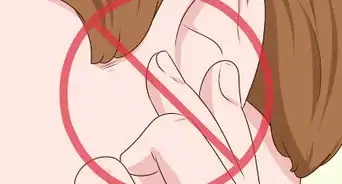
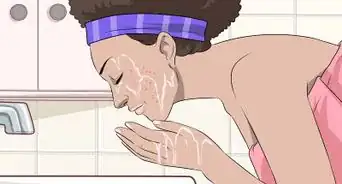

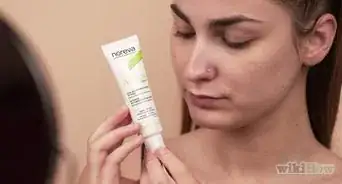
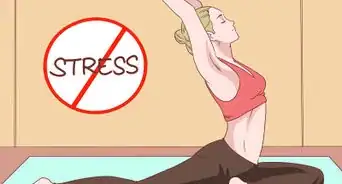
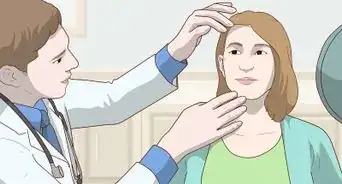
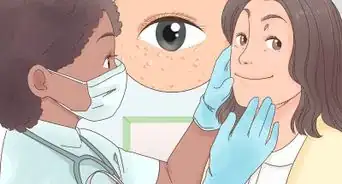
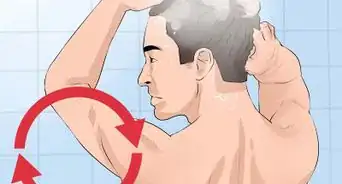
-Step-9.webp)
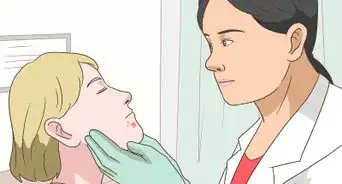
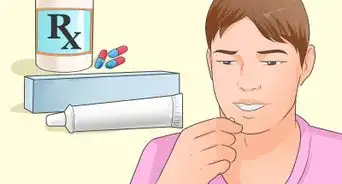











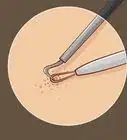


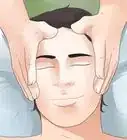



































Medical Disclaimer
The content of this article is not intended to be a substitute for professional medical advice, examination, diagnosis, or treatment. You should always contact your doctor or other qualified healthcare professional before starting, changing, or stopping any kind of health treatment.
Read More...